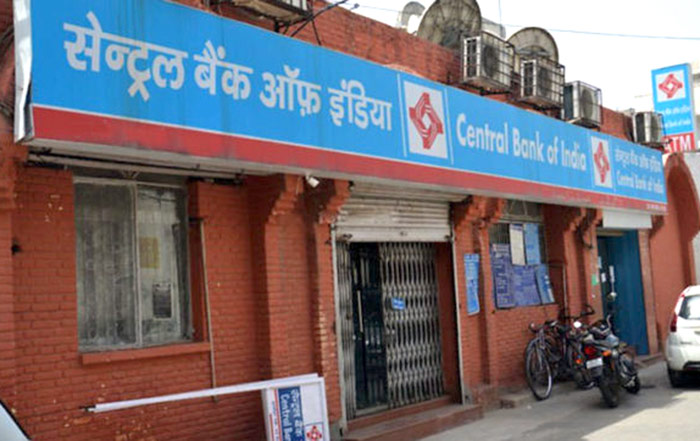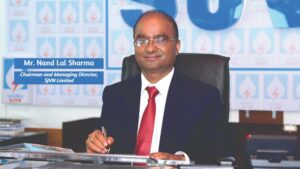By Krishna Kumar Mishra
Dr RC Lodha, Executive Director, Central Bank of India, in conversation with Krishna Kumar Mishra
Two months back data released by the RBI showed that deposit growth in 2015-16 has slipped to 9.9%, an annual rate of growth last seen in 1962-63. The deposit growth during 2011-2012, 12-13, 13-14, and 14-15 had stood at 11.75%, 14%, 14.29% and 10.7% respectively. The same goes with the credit growth, which too declined to 8.4 percent (YoY), led by a slump in industrial credit demand, as lack of capital expenditure dented appetite. However, the Central government has introduced a slew of schemes, implementation of the pay commission recommendation will bring in a lot of cash, and on the corporate front too the government is not inactive.
In this backdrop here is a banker’s point of view.
Do you think the investment cycle has revived in recent times? Is there enough demand for corporate credit?
As on date we can say it is not revived as per our expectations, but we feel 2017-18 and the subsequent year will be great years. When we see the entire economy part, things have started moving, but not at the desired pace. Corporate credit demand in India is directly related to the rural and retail demand and automatically increases or decreases accordingly. Manufacturing also has two aspects – what we are manufacturing and what the world is manufactured. When demand is met indigenously then it affects the economy in a positive way. But if the demand is met to a large extent through the import part then it doesn’t create corporate credit demand. What India needs is checks and balances in this regard. The import should be restricted and to a large extent whatever the resources are available inside should be fully utilized. Still, we are anticipating the GDP growth to be 7.5 percent and savings rate around 40 percent plus. Government is clearing the stalled projects, releasing funds, introduced new schemes like StartUp & Stand Up and Make in India. We are sure things are going to improve over a period of time. As a banker, we want the government to concentrate, consolidate, implement and manage all the available resources in such a way that everyone is benefiting.
There are voices raising the need for debt market development to reduce dependency on PSU banks. What is your take?
See, it is all the magic of cost. Whether it is manufacturing, or service industry, if the company is able to serve well and compete in the market with its present cost of funds, it will be successful. Which, in fact, is not the situation. To remain competitive in the market the company has to depend to a large extent on the cost part. So there are two options – either banks should reduce interest or an alternative is to be chosen. The company has choices like equity to some extent, or debt. Equity part could be at most 25-30 percent, but certainly not 100 percent. So debt market is again a major component. I feel, whereas the debt market is concerned the difference part is only the tenure. Banks give for shorter period and in debt market it could be 5, 10 or 15 years, depending upon the nature of the industry. So banks have their own compulsions and even if credit is available at lower interest with short duration you won’t find takers. So despite all the efforts of the banks debt market will remain important.
Can you share Central Bank of India’s projection about the credit growth?
We are already struggling like others with the recovery part. So in this regard Central Bank of India is not much ambitious. As the credit expansion is concerned, we would like to go moderately and not be very aggressive and that too only in some of the selected sectors. We are more focused with rural and semi-urban demand. So our preference is that let our agriculture portfolio and the priority sector grow. Our emphasis is also on Mudra loan and retail loan portfolio. So it is all this combination which we call RAM – Retail, Agriculture and MSME.
But we are also aware that it cannot contribute to a sizeable amount. It is the corporate credit that increases your top line, but certainly not always the bottom line. Still, we are very selective in terms of sectors as well as the companies coming to us. We have to make sure that tomorrow it should not deteriorate the health of the bank. Secondly, more number of borrowers and the number of projects mitigate the bank risk.
About projection part, we would like to see a moderate credit growth of around 8-10 percent and not beyond that.
This is the present policy, however, for next fiscal we will see different factors like the GDP growth, demand coming in and how far government initiatives have given the results. Let me make it very clear that we are not ignoring corporate sector, it’s just that we have put a boundary and irrespective of the excellence of the corporate we will not cross that. Companies which got a AAA rating three years back are struggling today.
Central Bank of India has got the privilege to have 51 lead districts across the country. The credit requirement, there is to be fulfilled by our bank. We have to make maximum contribution – right from preparation of credit plan to execution. We have 4750 branches across the country with a presence in each and every state and Union Territories. Our lead districts are also scattered and not concentrated in any particular state. In a real sense, we are the bank of India. We understand this responsibility well and we take it as a privilege. So growth potential has to be evenly distributed and we are doing that successfully.
What is your view about the strategic debt restructuring norms, namely scheme for the Sustainable Structuring of Stressed Assets (S4A)?
Corporate Debt Restructuring (CDR) is in the initial stage. Every debt is a compounding part of the interest. Here whereas debt part is concerned, it is divided in two parts – one is sustainable and other is non-sustainable. Non sustainable which is not able to generate income so let it be partly converted into equity. Equity means if you are earning you will get otherwise no. Sustainable part means you will be able to sustain and income can be generated. In my opinion, it will be more practicable and implementable in the manufacturing industry and not in service or trading industry. Trading depends upon demand and supply and these two again depend on various other factors. So S4 can be done for manufacturing industry, but we are being approached more from the trading concerns. Again, here we have to see past track record, whether he has diverted the funds, the amount of security provided etc. All these have to be considered before a proposal can be accepted. After all, it is in their interest, but not in the interest of the bank. In this regard, my submission would be that it should be framed on the pattern of UDAI, the scheme that government has introduced for discoms. There this sustainable and non-sustainable part is not mentioned. By converting into bonds the interest part comes down. That way it can help the industry. But it is, as I said, in the initial stage.
Do you think the cleanup process has taken care of NPAs concern?
Majority of NPAs of Central Bank of India like other banks is related to corporate. The problem here is the lead responsibility is restricted to only one bank or two banks. Suppose we have a share of just 5 or 10 percent in an account, we can’t dictate terms and conditions and my rigorous efforts will not yield the results. It is only those banks who got a larger share can effectively proceed. Central Bank of India has got this larger part only in a few accounts. We are meeting people, putting our efforts, but simultaneously we would also like to recover small advances. And in this effort we have launched a scheme and going for mega auctions. Our regional offices have identified certain properties. We are also asking state governments to organize Lok Adalats on a regular basis. We are also morally pressing them to pay as if his name goes to CIBIL he won’t be able to get loans from anywhere in the future. Because his Pan, Aadhar etc. are all part of his credit history. In each district, we have a separate agency known as FLCC persuading defaulters to come forward, compromise and continue to get finance.
Certainly there are some willful defaulters who just don’t want to pay even if they have money, thinking the government will give them relief some day. It’s more with farming sector. However, this government has not given any such hint rather forcefully introduced schemes to avoid such situations like PM Fasal Bima Yojna and where farmers will get a claim directly to their accounts. This is a very good initiative. In this everyone is protected – banks as well as farmers. The farmer just has to pay a small premium.
So you feel Prime Minister Narendra Modi has reformed the complete banking process?
To a great extent, yes. Things are made easier, more transparent, less time consuming and the benefactor is in direct contact with the bank. The only problem is still people are not much aware about the avenues opened before them. Based on the government initiatives we, at Central Bank of India, have devised an outreach program that we are conducting on a regular basis.
We have coined it SAMUHIK – where S stands for Simple Savings Account (PMJDY), open a simple account where you only need one documentary evidence and no compulsion of cash to be deposited; A stands for Aadhaar seeding in the accounts, get it done to receive all the subsidies, pension, scholarships and MNREGA remittances; M for Mudra Loan Distribution, we inform people details of this scheme which is very beneficial for the small self employed people, even barbers and smll shopkeepers; U stands for Unemployed to Employment by encouraging Entrepreneurship ; H stands for health check up for self and soil, as most of the farmers turn defaulter because they are unaware about the fertility of their soil and it is also good for the banks to know for which crop it would be safe to provide him loan; I stands for Insurance, we tell them about insurance for self under PMBSY, PMJJBY, Atal Pension Yojna, and PM Fasal Bima Yojna for corps; and lastly K stands for Kaushal Bharat program for skill development. It is our own humble way to make people aware of various government schemes. As long as they are not aware of all these initiatives, they will not be able to get complete benefit. We urge the central government to give directions to others also for considering the same.
Deposit growth has fallen in the country to an alarming percentage. Do you have any deposit mobilization plan considering 7th Pay commission’s recommendations benefit?
I fully agree. Yes, the government will release a huge amount of money, but service class is already under stress and I don’t think they will be able to save a substantial part of that. The disposable income will certainly increase, but if you take out the tax part which will go back to the exchequer, and considering a 10-15% savings is done then also the banking system will not be able to attract any sizeable amount. Even for savings people have different options besides coming to the bank. Right now we have no deposit mobilization program as such since there is not much credit demand. We are more aggressive towards the CASA deposits and there we are in double digits.






















